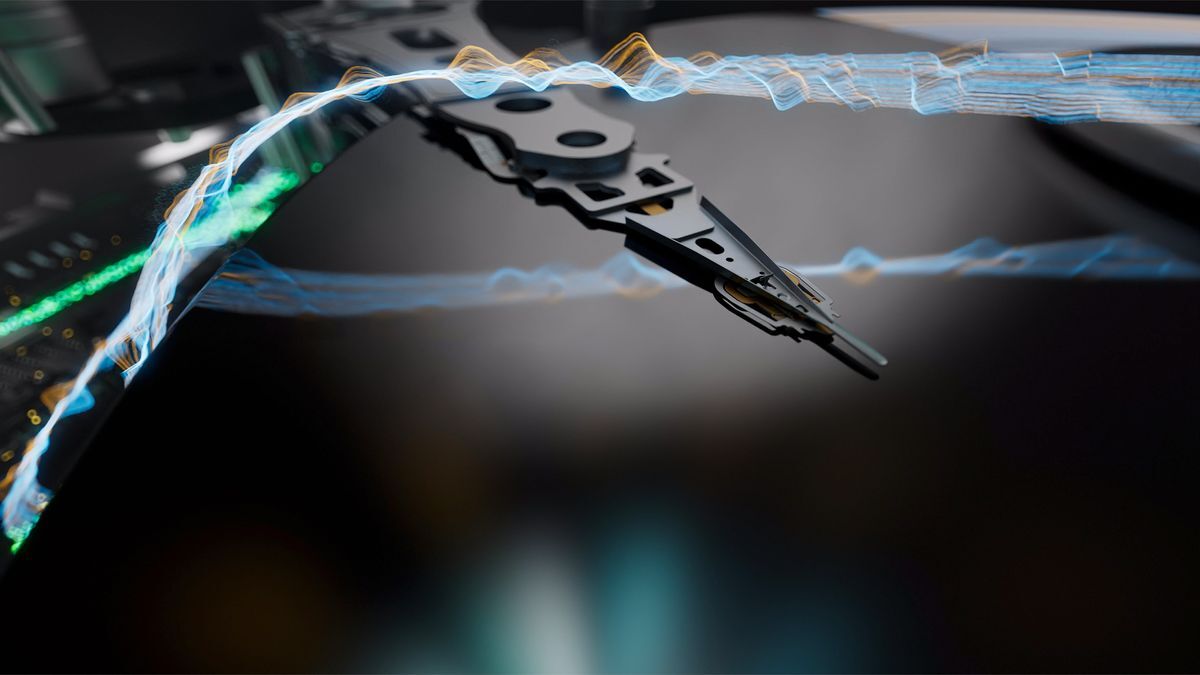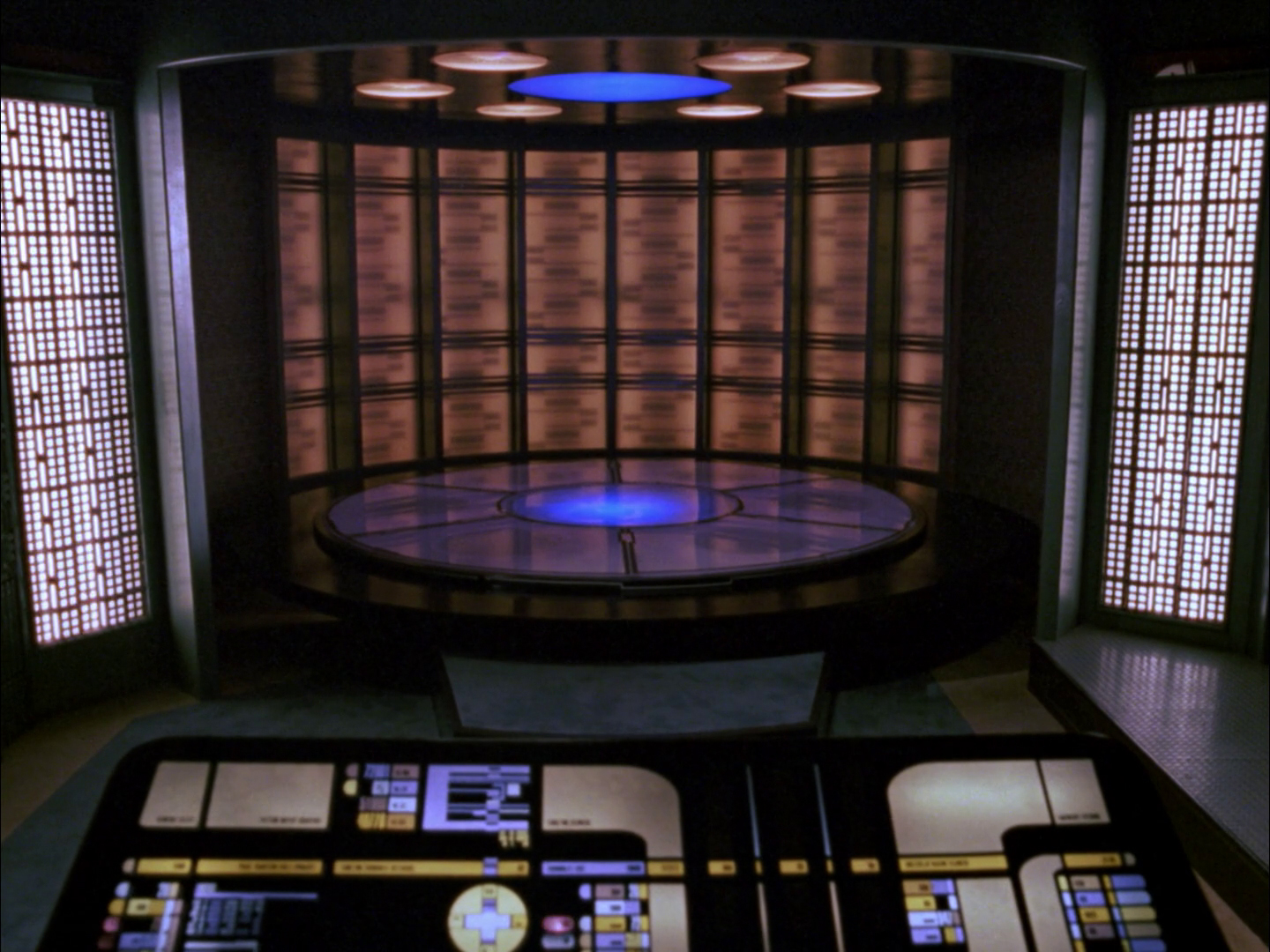Seagate this week unveiled the industry’s first hard disk drive platform that uses heat-assisted media recording (HAMR). Tom’s Hardware:
The new Mozaic 3+ platform relies on several all-new technologies, including new media, new write and read heads, and a brand-new controller. The platform will be used for Seagate’s upcoming Exos hard drives for cloud datacenters with a 30TB capacity and higher. Heat-assisted magnetic recording is meant to radically increase areal recording density of magnetic media by making writes while the recording region is briefly heated to a point where its magnetic coercivity drops significantly.
Seagate’s Mozaic 3+ uses 10 glass disks with a magnetic layer consisting of an iron-platinum superlattice structure that ensures both longevity and smaller media grain size compared to typical HDD platters. To record the media, the platform uses a plasmonic writer sub-system with a vertically integrated nanophotonic laser that heats the media before writing. Because individual grains are so small with the new media, their individual magnetic signatures are lower, whereas magnetic inter-track interference (ITI) effect is somewhat higher. As a result, Seagate had to introduce its new Gen 7 Spintronic Reader, which features the “world’s smallest and most sensitive magnetic field reading sensors,” according to the company. Because Seagate’s new Mozaic 3+ platform deals with new media with a very small grain size, an all-new writer, and a reader that features multiple tiny magnetic field readers, it also requires a lot of compute horsepower to orchestrate the drive’s work. Therefore, Seagate has equipped with Mozaic 3+ platform with an all-new controller made on a 12nm fabrication process.
Abstract credit: https://hardware.slashdot.org/story/24/01/19/1149214/30tb-hard-drives-are-nearly-here
I remember not too long ago mentioning my 5TB external drive, some rando on reddit saying “those don’t even exist” and everyone jumping on the down vote train saying my picture of it was fake.
And here we are only a few years later.
Pushing 30.
To be fair, I doubt that they were saying they didn’t believe drives could be that big. It’s that 5TB is an unusual size, and as far as I can tell only come in external drives. I personally have never seen one or even knew they existed until now, but I only buy bare drives.
It may very well be a 6TB with bad sectors
No, there are a few that I found once I went looking. One was a 2.5 inch which is likely used in external drives, the others were enterprise level drives. They are just not things I normally search for, but they do exist.
5TB is used in 2.5” form factors because it appears to cap out whatever manufacturing process they use for those. There’s no 6TB 2.5”s
There are no platter drives above 5TB. There are plenty of 2.5 inch SSDs available above that size. This is less a technical limitation and more of a business decision though.
When was that lol? I’ve had 10TB externals, which I bought through sales I found on Reddit, for over 5 years?
Just big enough for the next Call of Duty.
It is astounding how many comments on that article don’t know about 3-2-1, which is industry standard. Yet they feel qualified enough to say that this is “putting all your eggs in one basket” and make it sound like this is a bad idea.
I mean, do they not realize that was the exact same problem 10 years ago with 10TB HDD’s? And that we’ve had a protocol for literally decades to address it? Have they not heard of backups? Are they under the impression they’re only allowed to buy one?
I swear it’s not enough for everyone to have an opinion on everything. It’s not even enough for them to vocalize it. They have to sound smug and act like these companies are completely foolish for even making these. I don’t even understand how arrogant you have to be to operate like that on a regular basis.
Sincerely, some with several 18-20TB HDD’s drooling for this.
it’s called the bleeding edge because you risk getting cut every time .
by the time I can afford a 30 the 20s will be cheap enough to tile my floor with.
Won’t it be grand?
A lot of people severely underestimate how much storage enterprise environments need. For most regular people, the amount of storage needed to backup the important stuff is maybe a few gigabytes. Some documents, photos, that’s it. Everything else is downloadable.
From their perspective, these huge drives sound like they’re large enough to fit an entire company.
I’m not even an enterprise and I personally have about 35TB of externals mounted on my computer right now. I can’t even fathom what IBM or whatever needs
If your runing the event horizon telescope for instance, you needed to put the 5.5PB generated by a single month of observation on a plane to get it from Antarctica, Hawaii, and Chile to the mainland US, and their not even that big compared to the big tech cloud providers.
10 years ago, hard drives were offering the same bandwidth, it was already low compared to storage volume. That is the main complaint: bandwidth / IOPS are not following up.
Some comments were talking about transfer speeds/throughput yes but that is not what I’m referring to
This word salad sounds expensive. It probably won’t make it into my ZFS pool anytime soon even though a mirror of these would be nice.
So, like a few days to run a full backup and an eternity to resync a RAID array.
incredible. i love storage technology
How many of these do I need to install the latest windows updates?
Probably just one. But the accumulated updates, good grief, maybe 4?
Windows is a fucking hoarder.
Eleventeen.
deleted by creator
And as always I’ll have to wait until the BackBlaze HD reviews to find out if they actually work. Joking aside this is amazing.
“have to” nuthin, they sand me a lot of recovery work and performance issues when it came to choosing cmr vs smr last I needed to build a storage system.
gonna get meself a couple of those big boyes to store the entirety of wikipedia on
and as much as i can from library genesis.
I believe the current text only download version of wikipedia is only 45Gb, and pictures is only another 99GB on top of that. Text and static images are cheap, you generally need raw(or lots) of video to fill a couple 30tb drives in a home environment.
My NAS is ready
deleted by creator










